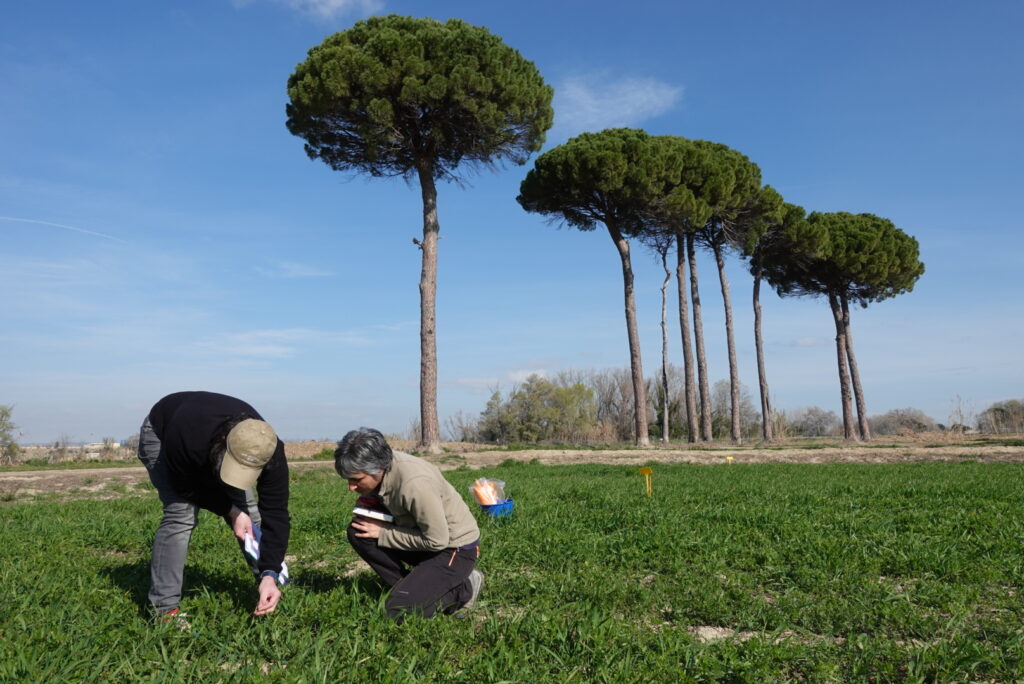The sun is casting its warm rays over a vast field in Zaragoza, Spain. Lush vetch leaves and sturdy barley stalks sway gently in the breeze. Amidst this tranquil scene, however, a silent invasion is underway. Emerging from the foliage are a multitude of pests such as aphids and cereal leaf beetles. With their insatiable hunger, they tear through the delicate crops with ruthless efficiency, threatening the harvest. But nothing is lost: The crop pests are relentlessly pursued by their natural enemies such as lady beetles and thrips.
Monitoring crop pests and their natural enemies is essential for farmers and researchers alike. Our Czech partners from Agritec, led by Marek Seidenglanz, are experts in this crucial task. Following our project meeting last month, they shared their knowledge with our Spanish partners from CSIC. For a hands-on demonstration, they visited the experimental farm of CSIC located in Zaragoza, which is one of our 180 on-farm living labs. There, the researchers assessed the crop pests and diseases in the field.
Monitoring crop pests in Zaragoza, Spain
As the sun bathed the fields in its warm glow, the researchers strode through the fields, their keen eyes scanning for signs of the unseen adversaries lurking amidst the crops. Their goal is to quantify and understand the abundance, distribution patterns, and interactions of pests and their enemies within the diverse cropping system. At the heart of their inquiry lies a crucial question: how does intercropping affect crop pests compared to monoculture systems?
Celebrating teamwork and knowledge exchange
Reflecting on the visit, Ana Cristina Bielsa Aced from CSIC is grateful to the Czech partners for providing a hands-on introduction to the assessment methods: “For me, the visit was very useful to establish the sampling points and to learn how to do the sampling correctly. I am very grateful.” This collaborative spirit underscores our collective commitment to advancing sustainable agriculture practices across Europe.
Advancing agricultural sustainability
As the project progresses, the insights from the crop pest assessment in Zaragoza, along with findings from the other on-farm living labs across Europe, as well as in Pakistan and Egypt will shed light on the complex interplay between crop composition and ecosystem dynamics. By addressing fundamental questions about species abundances and distribution patterns, we aim to lay the groundwork for resilient agricultural systems that thrive in harmony with nature.
